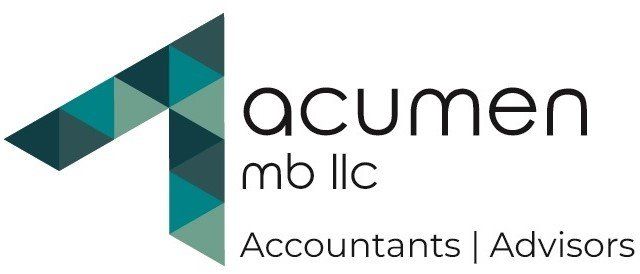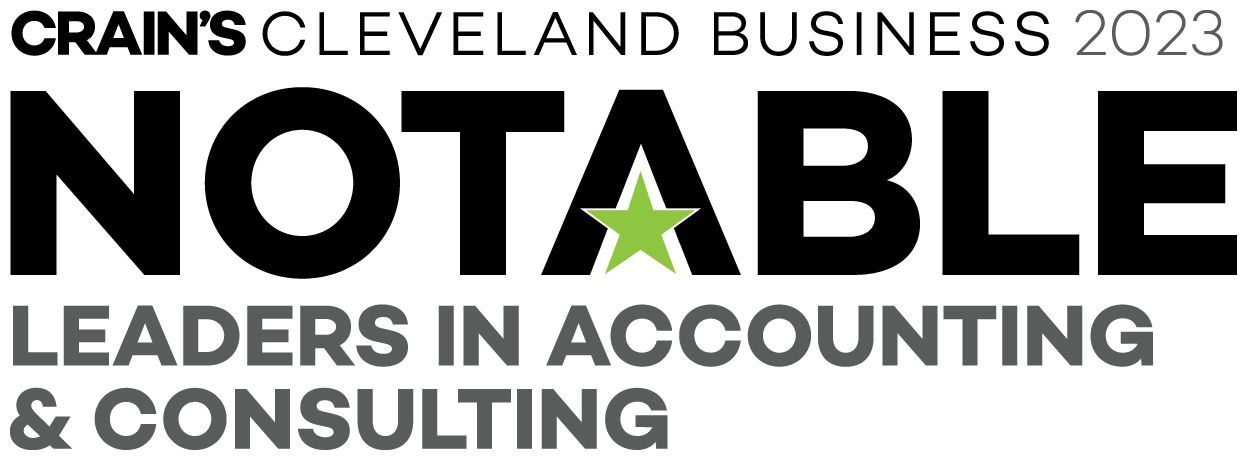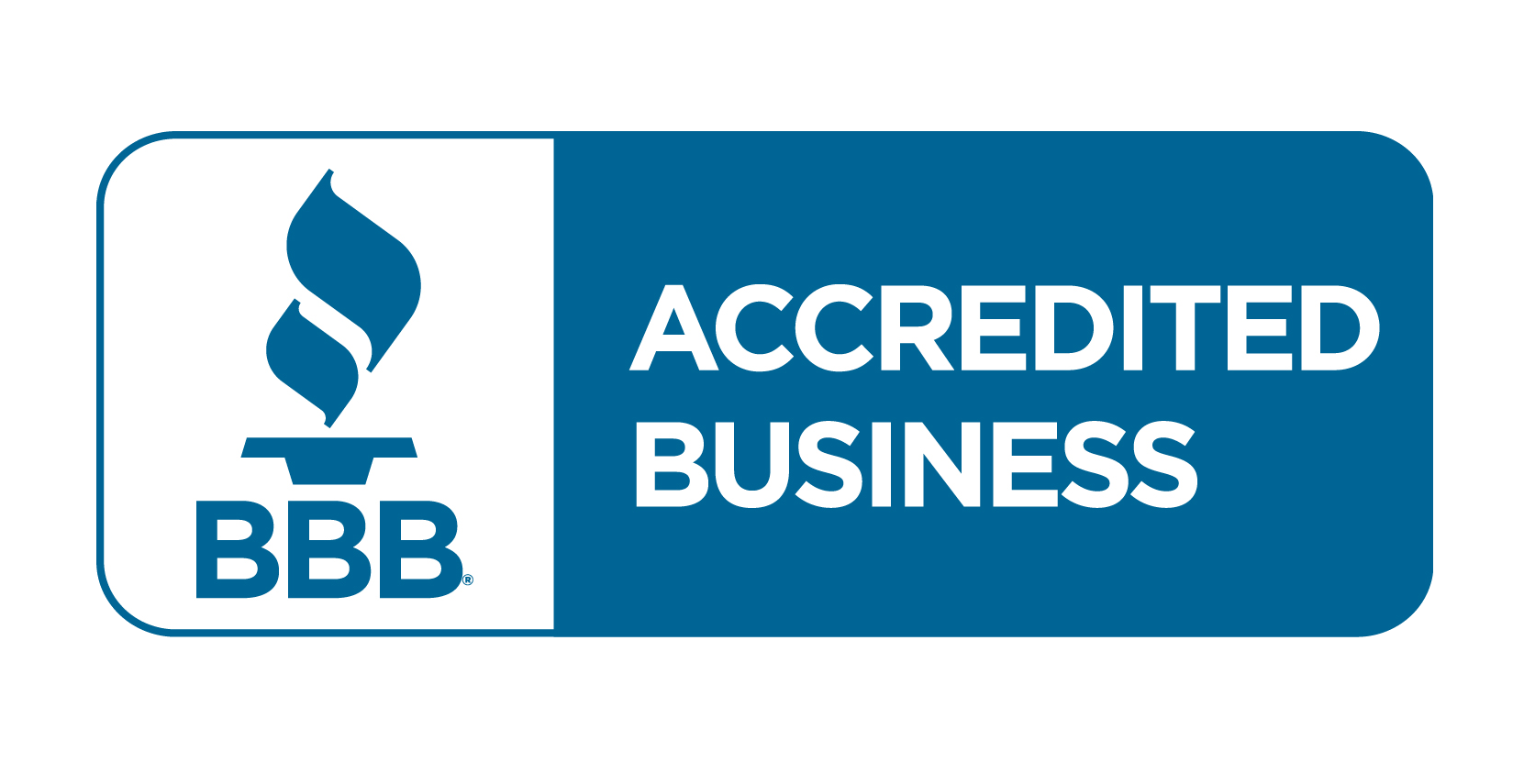Spending the PPP Money on You and Your Employees
August 19, 2020
If you report your business income and expenses on Schedule C of your Form 1040, your Payroll Protection Program (PPP) loan forgiveness is straightforward, as you see in the four answers below.
1. Paying Myself
Question. I know that I can achieve full forgiveness based solely on my 2019 Schedule C income in 10.8 weeks under the 24-week program. Do I have to pay myself every week for 10.8 weeks?
Answer. No. Let’s say your PPP loan is for $20,000. You could, for example, take $20,000 out of your business account in one lump sum and put that in your personal savings anytime during the 10.8-week period and then apply for forgiveness in week 11.
Because both your loan and forgiveness are based on your 2019 Schedule C net profit (yes, last year), you simply need to use the loan money for personal purposes. This is how you pay yourself and obtain loan forgiveness the easy way.
Sure, you need to use only 60 percent of the proceeds for yourself and could use 40 percent for interest, rent, and utilities. But think about it:
• Pay yourself only: simple paperwork.
• Pay interest, rent, and utilities: more rules and paperwork.
Keep it simple. Don’t make yourself suffer.
2. Waiting to Spend
Question. Can I wait a number of weeks before I spend my loan proceeds?
Let’s say I receive the PPP proceeds on August 1, 2020. Can I use the 24-week period and start on August 17, for 11 weeks? Would that be okay? And would it be eligible for forgiveness?
Answer. Yes, no problem. But let’s be clear:
• For PPP loans made on June 5 or later, the 24-week covered period is the rule (there’s no “can” here—no eight-week possibility).
• There’s no requirement that a Schedule C taxpayer spread out the payments.
• There’s no payroll or other impediment here.
3. Spending in Chunks
I am a Schedule C taxpayer with no employees. My PPP loan amount was deposited into my business checking account on May 19, 2020. I am not electing the eight-week covered period. Instead, I am choosing the 24-week covered period, which ends on November 2, 2020.
I have two questions.
Question 1. Can I write one check for every four weeks of payroll and deposit it in my personal checking account?
Answer 1. Yes—but this is not a payroll check. As a Schedule C taxpayer with no employees, you have no payroll. Your PPP loan was based on your 2019 net profit. And your forgiveness will be based on the same amount. You don’t need to spread out your payments.
Question 2. Does this check have to be cashed within that four-week period, or if it is written within that period, is that sufficient to apply for forgiveness?
Answer 2. In general, your check is a payment on the date it is written. Because you are dealing with yourself, you should ensure that the check is cashed soon after it is written.
Also, we don’t see any wisdom (in fact, just the opposite) in writing the check within the 24 weeks and then cashing it outside the 24 weeks.
4. Got the PPP Money but Had a Loss in 2019
Question. I am a Schedule C filer, ran at a loss in 2019, but withdrew $120,000 from the business as the business increased its debt position.
I used my draw amount to obtain a $120,000 PPP loan before the guidance was issued on how sole proprietors should calculate their pay. If the business now has two employees, can both of those employees be used for the forgiveness application?
Answer. Yes, you can use the two employees on the forgiveness application, and you can use 24 weeks of pay. In addition to payroll, 40 percent of the forgiveness can come from interest, rent, and utilities.
Example. Say the two-employee payroll for the 24 weeks totals $60,000 and the interest, rent, and utilities total $30,000. You would achieve $90,000 of forgiveness.
Q&A: PPP Forgiveness Answers for S Corporation Owner-Employees
Tax law definitions do not apply to much of the PPP, making it new ground for owners of S corporations. Here are answers to four questions of concern to many S corporation owners.
1. Spouse Owns S Corporation
Question. My wife owns 100 percent of the S corporation. She has a full-time job and does no work for the S corporation. I am the sole worker in the S corporation. Am I treated as:
• a “non-owner employee” of the S corporation; or
• an “owner-employee” subject to the limits?
Answer. The PPP guidance does not address the situation you describe. From what we know, you are a non-owner employee, which means you are not stuck with the owner-employee limits.
In tax law, you would have to consider “attribution rules” that would make you own what your wife owns because of your marital relationship. (Yes, in tax law you both would own 100 percent.) But the PPP guidance to date contains no such rules.
According to the latest from the Small Business Administration (SBA), you may rely on the laws, rules, and guidance available at the time of your PPP loan application. As we write, the latest guidance is from over a month ago, on June 25, 2020.
2. S Corporation Owner-Employee with No W-2
Question. I submitted my PPP loan application before the guidance disallowing independent contractor payments was published. And at the time of submission, I had not yet started paying myself a salary.
Now I have the PPP money from the bank but cannot get it forgiven through contractor payments. If I pay myself on a W-2, I lack the look-back period of 2019 payroll. Am I out of luck? Should I go on payroll and hope for the best?
Answer. Under the rules, you are out of luck. Your loan forgiveness is based on the lower of your 2019 W-2 (zero) or your 2020 W-2.
3. S Corporation Loan Based
on K-1
Question. I operate my business as an S corporation with two W-2 employees other than me (I don’t receive a W-2). I applied for the PPP loan and obtained it based on my K-1.
A few weeks later the lender told me that the money I received was not available to be forgiven. This doesn’t seem fair. My profit is my income. Is there any workaround for this?
Answer. No—no workaround. But in your case, likely no PPP loan forgiveness problem either.
But first, let’s think about taxes. You operate as an S corporation, and you take no salary. (That’s incorrect and likely a tax problem if the IRS audits your tax return.)
Now, let’s get to the PPP. Your lender granted you the PPP loan based on the K-1 and ignored your employees. That shows how confusing the PPP has been. But let’s ignore the right and wrong of that and get to the heart of the issue. Can you obtain forgiveness?
Yes, your S corporation’s forgiveness begins with what you pay your W-2 employees during the 24-week covered period, including what you pay in health insurance and retirement on their behalf. In addition, you may include some or all of your payments for business interest, rent, and utilities during the 24 weeks beginning with receipt of the loan.
Example. Let’s say you received a $100,000 loan. If your payroll during the 24 weeks is $63,000 and the rent and utilities total $37,000, you would qualify for 100 percent forgiveness. If you achieve this in 20 weeks, you could apply for forgiveness then.
Observation. The fact that the lender based your loan on your profits is simply a mistake by the lender. It does not affect forgiveness, which is based on your using the money for the intended PPP purposes such as payroll.
4. S Corporation with Home Office
Question. You recommend that the S corporation owner use an expense report to submit home-office expenses to the business for reimbursement and then classify the reimbursement in the tax return as an office expense.
How would we classify this as mortgage interest and utilities under the PPP loan forgiveness guidelines? We have the same question for partnerships where an item is claimed as an unreimbursed partner expense.
Answer. The reimbursed expense won’t work for the PPP, but here’s the solution: choose the 24-week program, and you will achieve full forgiveness with only the payroll in as little as 10.8 weeks.
Insights into the PPP Loan and Its Forgiveness
We receive many questions about the PPP. Here are two of them with our answers.
1. Good Faith at the Time
Question. What are your thoughts on the repercussions for business owners who acted in good faith based on the information available at the time and are now left to do things that may be more questionable to earn PPP loan forgiveness?
Answer. First, with good faith, there’s no fraud issue as there is no fraud intent. Second, lenders and individuals had to scramble for a good two months or more before guidance was clarified, so many of the PPP loan application forms were murky (and some still are).
Obtaining the loan based on the guidance that existed at the time of your loan application and approval is a non-issue. Further, lenders used their own formulas during the early process (and in some cases, still use them) to determine the loan amounts.
As to taking “questionable” actions to earn forgiveness, if you follow the forgiveness applications, you are doing nothing questionable. And that’s what you should do: follow the instructions in the loan forgiveness applications.
2. EIDL, EIDL Advance, and PPP
Question. I’ve heard of the Economic Injury Disaster Loan (EIDL), EIDL advance, and the PPP. What are the differences?
Answer. We’ll deal with the big picture here. It will prove helpful.
PPP. The PPP is the cash infusion program of choice. The cash infusion part comes from a bank or other SBA lender and is based on your prior payroll (2019 in most cases). It comes into your business as a forgivable loan if you spend the money on defined payroll, interest, rent, and utilities during a period of up to 24 weeks.
Example. You receive a $50,000 PPP loan and spend it within the 24 weeks on defined payroll with no reduction in your employee head count. You qualify for 100 percent forgiveness.
EIDL. Unlike the PPP loan, which comes from a bank or other approved SBA lender, the EIDL is a loan directly from the SBA; it carries a 3.75 percent interest rate, may require collateral, and must be repaid.
EIDL advance. The EIDL advance, when available, comes into play with the EIDL application. It’s an advance on the EIDL of up to $10,000. If you reject or don’t receive an EIDL and don’t have a PPP loan, the EIDL becomes a non-taxable grant and does not have to be repaid.
If you have a forgivable PPP loan, you reduce the amount of forgiveness by the amount of your EIDL advance.
Example. You have a forgivable PPP loan of $30,000 and an EIDL advance of $7,000. The lender will forgive $23,000 of your $30,000. Let’s say you pay off the remaining $7,000. In this case, you have received a net of $30,000 ($7,000 + $30,000 - $7,000).
All About Limited Liability Companies
Limited liability companies (LLCs) are a popular choice of entity for small businesses and investment activities. LLC owners are called members.
Single-member LLCs have one owner, although spouses who jointly own an LLC in a community property state can elect treatment as a single-member LLC for federal income tax purposes. We will call LLCs with two or more members multimember LLCs.
Key point. LLCs are not corporations. But LLCs can offer similar legal protection to their members (owners).
Here are the most important things to know about LLCs.
LLCs Offer Legal Protection
Using an LLC to conduct a business or investment activity generally protects your personal assets from LLC-related liabilities—similar to the legal protection offered by a corporation.
As you know, liabilities can arise from simple things—like a delivery guy slipping on something you left on your front steps—or in seemingly endless and complicated ways if you have employees.
Key point. As a general rule, no type of entity (including an LLC) will protect your personal assets from exposure to liabilities related to your own professional malpractice or your own tortious acts.
Tortious acts are wrongful deeds other than by breach of contract—such as negligent operation of a motor vehicle resulting in property damage or injuries. The issue of liability protection offered by an LLC is a matter of state law. Seek advice from a competent business attorney for details.
Single-Member LLC Tax Basics
Single-member LLC businesses owned by individuals are treated as sole proprietorships for federal income tax purposes unless the member elects to treat the single-member LLC as a corporation.
In other words, the default federal income tax treatment for a single-member LLC business is sole proprietorship status. Under the default treatment, you simply report all the single-member LLC’s income and expenses on Schedule C of your Form 1040.
If the single-member LLC business activity generates net self-employment income, you will report that on Schedule SE of your Form 1040.
Rental. If the single-member LLC activity is a rental activity, you report the rental income and expenses on Schedule E of your Form 1040.
Farm or ranch. You report the numbers for a farming or ranching activity on Schedule F.
Simple. You don’t need to file a separate federal income tax return for the single-member LLC. And other things being equal, simple is good.
Three key points
1. The big federal income tax advantage of operating as a single-member LLC is simplicity.
2. The big non-tax advantage is liability protection, under applicable state law.
3. As mentioned, you can elect to treat a single-member LLC as a corporation for federal income tax purposes, but we don’t recommend that, for reasons we explain later.
Multimember LLC Tax Basics
Multimember LLCs are treated as partnerships for federal income tax purposes unless you elect to treat the LLC as a corporation.
In other words, the default federal income tax treatment for a multimember LLC is partnership status. Under the default treatment, you must file an annual partnership federal income tax return on Form 1065.
From the Form 1065 partnership return, the LLC issues an annual Schedule K-1 to each member to report that member’s share of the LLC’s income and expenses. The member then takes those taxable and deductible amounts into account on the member’s own return (Form 1040 for a member who is an individual).
The LLC itself does not pay federal income tax. This arrangement is called pass-through taxation, because the income and expenses from the LLC’s operations are passed through to the members, who then take them into account on their own returns. (The same pass-through taxation concept applies to entities set up as “regular” partnerships under applicable state law.)
Electing to Treat the LLC as a Corporation for Tax Purposes
You have the option of electing to treat a single-member LLC or multimember LLC as a corporation for federal income tax purposes. You do that by filing IRS Form 8832, Entity Classification Election, to change the default classification of the single-member LLC or multimember LLC to the new classification as a corporation.
If your desire is to have your LLC treated as an S corporation, it can elect S corporation status directly using IRS Form 2553, or it can elect C corporation treatment on Form 8832 and then S corporation treatment on IRS Form 2553. While there may be valid non-tax reasons for electing to treat an LLC as a corporation, we think tax reasons generally dictate against taking that step.
If you conclude that there are tax advantages to electing corporate status, why not just actually incorporate your operation in the first place? That’s simpler. Keeping your tax matters simple is generally good policy.
Electing corporate status from the LLC could have unintended tax consequences. For example, you can potentially collect federal-income-tax-free gains from selling stock in a qualified small business corporation (QSBC). But you must own shares and hold them for over five years to cash in on this super-favorable deal. Can an LLC membership (ownership) interest count as QSBC stock for this purpose? Apparently not. It’s not stock.
If you are looking for the QSBC stock break, just set up as a corporation in the first place.
Here’s another example: a special federal income tax break allows you to annually deduct up to $50,000 of losses from selling eligible small business stock, or $100,000 if you’re a married joint filer, and treat the loss as a tax-favored ordinary loss instead of a tax-disfavored capital loss.
Can an LLC membership interest count as eligible stock for this purpose? Apparently not. It’s not stock. Avoid the problem—set up as a corporation in the first place.

At Acumen MB LLC, we’re proud to celebrate National STEM Day—a day dedicated to inspiring curiosity and innovation in Science, Technology, Engineering, and Mathematics (STEM). While many people think of lab coats, robots, or complex equations when they hear “STEM,” the truth is that these disciplines are also the foundation of modern accounting and tax services. Accounting Is a STEM Career Accounting is more than numbers on a page—it’s a blend of mathematical precision, analytical thinking, and technological innovation. As the financial world becomes more data-driven, accountants rely heavily on the same STEM principles that power breakthroughs in other industries. From using algorithms to detect fraud to developing predictive models for business growth, STEM skills are at the heart of what we do. Technology Is Transforming the Tax World STEM innovations have revolutionized the way tax professionals serve clients. Cloud-based accounting platforms, data analytics tools, and secure online filing systems allow us to work more efficiently and accurately than ever before. At Acumen MB LLC, we embrace these technologies to deliver smarter solutions—whether it’s optimizing your tax strategy, automating reporting, or safeguarding your financial data. Encouraging the Next Generation of Financial Thinkers National STEM Day also reminds us of the importance of inspiring future professionals. Today’s students learning coding, data science, or advanced math could become tomorrow’s auditors, CFOs, and financial analysts. We encourage parents, teachers, and mentors to help young people see the exciting possibilities that exist at the intersection of STEM and accounting. The Bottom Line STEM isn’t just shaping the future of science—it’s shaping the future of finance. At Acumen MB LLC, we combine the power of technology and analytics with a deep understanding of tax law and accounting principles to help our clients thrive in an increasingly digital world. So, on this National STEM Day, we celebrate not only the scientists and engineers, but also the accountants and tax professionals who turn numbers into knowledge and data into decisions.
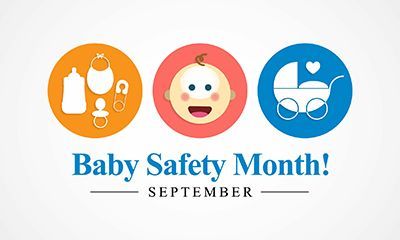
September is Baby Safety Month, a time dedicated to raising awareness about keeping the youngest members of our families safe and healthy. From baby-proofing your home to staying on top of car seat regulations, parents and caregivers go above and beyond to make sure little ones are well protected. At Acumen MB LLC, we know that safety extends beyond the physical environment—it also includes creating a secure financial foundation for your family. Just like baby gates and outlet covers help prevent accidents, strong financial planning can help prevent unnecessary stress and risk down the road. Safety at Home and Safety in Finances Baby-proofing your home: Installing cabinet locks, outlet covers, and baby gates protects your child from harm. Financial-proofing your future: Setting up savings accounts, college funds, and proper insurance coverage protects your family’s financial well-being. Both require proactive planning. It’s always easier to take preventative steps now than to deal with avoidable challenges later. Tax Considerations for Growing Families Welcoming a baby into your family brings joy—and also some important financial changes. Here are a few key areas to keep in mind: Child Tax Credit: Parents may be eligible for significant tax credits that help reduce their tax bill. Dependent Care Credits: If you pay for childcare, you could qualify for credits that help offset those costs. 529 Plans: Contributions to education savings plans may provide tax advantages while securing your child’s future. Flexible Spending Accounts (FSAs): Setting aside pre-tax dollars for dependent care or medical expenses can help stretch your family budget. Building a Secure Future Just as parents prioritize safety gear for their little ones, we encourage families to prioritize financial safety. Proper planning, tax strategy, and organization can provide peace of mind—knowing that you are protecting not just your child’s present, but also their future. At Acumen MB LLC, we’re here to help guide families through these exciting (and sometimes overwhelming) transitions. From understanding tax credits to building long-term financial strategies, our team is committed to supporting you as you safeguard what matters most.
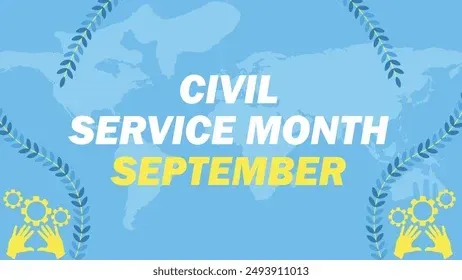
At Acumen MB LLC, we’re proud to join in honoring National Civil Service Month this September. It’s a time to recognize the dedication of the men and women who serve our communities every day—whether they’re firefighters, police officers, teachers, postal workers, or government employees keeping essential services running smoothly. Why Civil Service Matters Civil servants often work behind the scenes to make sure life runs as it should. They maintain our roads, keep our neighborhoods safe, educate our children, and support countless public programs. Their efforts may not always make headlines, but without them, our communities wouldn’t thrive. The Connection Between Civil Service and Taxes Taxes are what make civil service possible. Each time we file returns, make payments, or carefully plan for the future, we’re not just meeting financial obligations—we’re helping support the people who keep our communities strong. Public schools, emergency services, infrastructure, and health programs all depend on that funding, and civil servants are the ones who bring those services to life. Our Message of Gratitude This month, and every month, we want to say thank you to the civil servants who dedicate themselves to the greater good. Your commitment, compassion, and professionalism make a real difference in the lives of so many. At Acumen MB LLC, we see financial responsibility as a partnership between individuals, businesses, and the public sector. Together, we create communities that work for everyone. Happy National Civil Service Month—and thank you to all who serve.
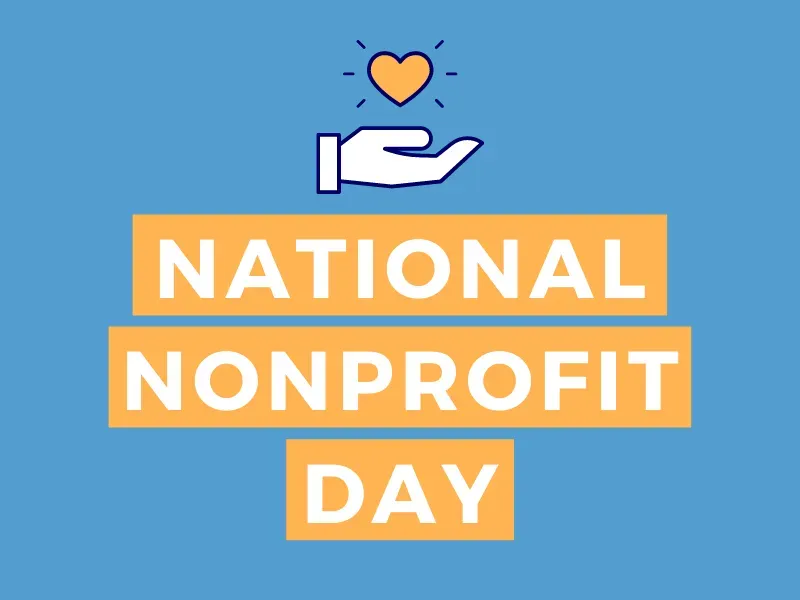
At Acumen MB LLC, we believe every dollar has the potential to make a difference — especially when it’s directed toward causes that transform communities. On National Nonprofit Day, we’re honoring the dedication, vision, and impact of nonprofit organizations, both here in Northeast Ohio and across the nation. Nonprofits aren’t just about goodwill — they’re economic engines, employers, and vital service providers. From food security programs to educational initiatives, these organizations improve lives every day. And as accountants, we know that supporting nonprofits can also bring important tax benefits to individuals and businesses who give wisely. The Tax Advantage of Giving While the heart of charitable giving is generosity, there are also tangible financial benefits to consider: Itemized Deductions – If you itemize your deductions on your federal return, donations to qualified 501(c)(3) organizations can reduce your taxable income. Appreciated Assets – Donating stocks or other appreciated assets may allow you to avoid capital gains tax while still deducting the fair market value. Corporate Giving – Businesses can deduct charitable contributions (within certain limits), and strategic giving can strengthen community ties while lowering taxable income. Tip: Always keep detailed records and receipts, and confirm the organization’s IRS-qualified status before donating. Spotlight on Local Nonprofits Here in the Cleveland area, we’re fortunate to have nonprofits making a difference in every corner of the community: Greater Cleveland Food Bank – Fighting hunger across Northeast Ohio by providing meals, resources, and advocacy. Cleveland Metroparks Zoo’s Future for Wildlife – Supporting global conservation efforts and wildlife protection. Providence House – Offering crisis nursery services to protect at-risk children and support families in need. Cleveland Play House – America’s first regional theater, enriching our community through arts and education. Connecting for Kids – Providing education and support to families with children facing developmental, behavioral, or learning concerns. BlueWater Chamber Orchestra – Bringing world-class classical music performances to Cleveland audiences and promoting music education. National Nonprofits Making a Global Impact Beyond our local borders, these national organizations inspire change worldwide: American Red Cross – Providing disaster relief, blood donation services, and humanitarian aid. Habitat for Humanity – Building affordable housing and stronger communities across the U.S. and abroad. Feeding America – Connecting surplus food with families in need through a nationwide network of food banks. Charity: Water – Bringing clean and safe drinking water to people in developing countries. How You Can Help — and Track It for Tax Purposes Giving is more than writing a check — you can also volunteer time, donate goods, or offer professional services. While the value of your time isn’t deductible, out-of-pocket expenses related to volunteering (like mileage) can be. The key is documentation — something we at Acumen MB LLC can help you organize so you get the full financial benefit of your generosity. Let’s Keep the Giving Going National Nonprofit Day is just one day, but the impact of your generosity can last a lifetime. Whether you give locally or globally, your contribution is part of a bigger story — one where community, compassion, and financial stewardship work hand in hand. If you’d like guidance on maximizing the tax benefits of your charitable giving or ensuring your records are audit-ready, contact Acumen MB LLC today. Let’s work together to make sure your generosity goes further — for you and for the causes you care about.
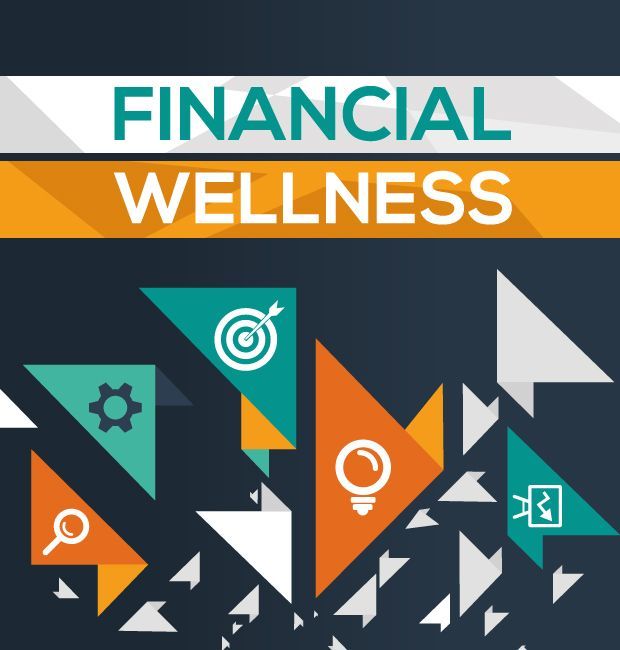
August 14th marks National Financial Awareness Day, and here at Acumen MB LLC, we believe it’s the perfect moment to pause, take stock of your finances, and make sure your tax and accounting strategies are working for you—not against you. Whether you're managing a household, running a business, or planning for retirement, financial awareness isn't just about budgeting—it’s about building a tax-savvy, future-focused plan. Use Tax Awareness to Build Financial Strength Being financially aware means knowing not only where your money is going, but also where it could be going—if you make smarter tax decisions. Have you checked your withholdings lately? If you're getting a large refund or surprise bill each year, it's worth reevaluating. Are you taking advantage of deductions and credits? From education expenses to home energy improvements, there are ways to reduce your tax liability legally and effectively. Are your business records audit-ready? Clean books aren't just good practice—they can save you serious time and money during tax season. Financial awareness also means being proactive—not reactive—about your accounting. That’s where we come in. Our team helps clients across Ohio and beyond stay on top of their tax planning, budgeting, and reporting, so they can make informed decisions year-round. Today’s Bonus Tip: Ohio’s Sales Tax Holiday Ends Tonight! If you’ve been meaning to stock up on school supplies or grab that extra pair of shoes, today’s your last chance to take advantage of Ohio’s Sales Tax Holiday. Qualifying clothing, school supplies, and instructional materials are sales tax-free through midnight tonight. Not only does this provide immediate savings at checkout, but it’s also a great example of using tax knowledge to stretch your dollars—one of the many small, intentional choices that add up to greater financial control. Want to learn more before time runs out? Check out our full blog post on the Ohio Sales Tax Holiday: https://www.acumenmb.com/ohio-sales-tax-holiday Let’s Talk About Your Financial Future Financial awareness doesn’t happen in a day—but today is a great day to start. If you’re ready to get more intentional about your money, taxes, or business accounting, let’s have a conversation. Give us a call or reach out via our contact page . From all of us at Acumen MB LLC—happy National Financial Awareness Day, and here’s to a more empowered financial future!

Every August 6th, we pause to recognize the incredible contributions of farmworkers across the country. At Acumen MB LLC, we understand that appreciation goes beyond words—it includes advocating for the financial well-being of those who labor to keep our communities nourished. Farm work is one of the most physically demanding and essential jobs in our economy, yet many farmworkers face unique challenges when it comes to navigating the U.S. tax system. This Farmworker Appreciation Day, we want to shine a light on the financial side of farm work and explore how accounting professionals can support and empower this vital workforce. The Tax Realities of Farm Labor Farmworkers—many of whom are seasonal or migrant workers—often deal with: Unfamiliarity with U.S. tax laws , especially if English is not their first language. Complex income reporting , especially when income is paid in cash or by multiple short-term employers. Misclassification as independent contractors , which can shift the burden of employment taxes unfairly onto the worker. Limited access to tax credits and refunds they may be eligible for, like the Earned Income Tax Credit (EITC) or Child Tax Credit (CTC). These issues can lead to overpayment, underpayment, or missed opportunities for financial stability. Our firm believes tax literacy and ethical accounting practices are essential tools in advancing equity for farmworkers. Our Role: Advocacy Through Accuracy At Acumen MB LLC, we believe that one way to truly honor farmworkers is by supporting fair and accurate financial practices in agriculture. That means: Helping agricultural employers stay compliant with payroll tax laws and proper worker classification. Partnering with organizations that offer multilingual tax preparation assistance or free filing services to farmworkers. Educating small farms and agribusinesses about the benefits of responsible bookkeeping and employee tax reporting. Highlighting tax incentives for farms that invest in their workforce, such as those that provide housing, transportation, or educational programs. We’ve worked with a number of agricultural clients and small farms, and we know firsthand how clear, ethical financial management benefits everyone—from the farm owners to the people in the fields. Celebrating with Purpose Farmworker Appreciation Day isn’t just about gratitude—it’s about action. If you run a farm or agribusiness, consider using this day to: Review your payroll systems for compliance. Set up a meeting with your accountant to discuss year-end tax planning. Donate to organizations that provide legal and financial aid to farmworkers. Ask your tax professional how to support workforce development through compliant, tax-savvy strategies. At Acumen MB LLC, we are proud to support the backbone of our agricultural system by helping employers do right by their workers and helping workers understand their rights. Because behind every basket of produce is a person—and they deserve not just our thanks, but also our advocacy.
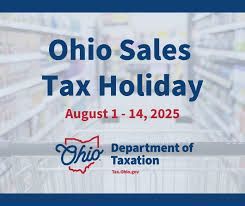
Ohio’s Sales Tax Holiday runs for a full 14 days in 2025—from 12:00 AM on Friday, August 1 through 11:59 PM on Thursday, August 14. During this period, all tangible personal property priced at $500 or less per item is exempt from Ohio state sales tax (5.75%) and most local taxes. What's Covered—and What's Not Eligible items include (but aren’t limited to): Back‑to‑school supplies and clothing Electronics (tablets, TVs, computers) Furniture, kitchenware, home décor, and indoor/outdoor plants Sporting goods, books, pet supplies, and even dine‑in food and beverages—as long as each item is under $500 Not eligible for the exemption: Items priced over $500 Motor vehicles, watercraft/outboard motors, alcohol, tobacco, vapor products, and items containing marijuana Services—except when repair or installation parts are individually itemized under $500 Tax Savings in Practice Residents of Cuyahoga County usually face a combined sales tax of around 8%. That means, on a $500 eligible purchase, you can save about $40 in tax alone. If you make multiple purchases under $500, each fully qualifies, so total savings can significantly stack—especially for bulk items or multiple family members. How to Plan Effectively From a tax-wise standpoint, here's how to get the most value during the holiday: Identify eligible purchases: Review your back‑to‑school or household shopping list and ensure each item is priced at $500 or less. Use discounts smartly: Apply coupons or in‑store promotions to bring a product under the $500 threshold—it then qualifies for exemption Track item-by-item pricing: If items are bundled but exceed $500, the bundle is fully taxable—even if shopped separately Buy online or offline freely: Purchases made and paid for during the holiday qualify—even if shipping or delivery happens later. If your order combines exempt and non-exempt items, shipping charges need proportional allocation. Keep receipts and monitor returns: Save proof in case a retailer improperly charges tax. Exchanges within the window should remain tax-free for eligible items. However, returns after the holiday or exchanges for non-eligible items could trigger sales tax Why It Matters from a Tax Perspective As an accounting firm, we see families and small businesses struggle with rising costs—from inflation to rising tariffs. The expanded Ohio Sales Tax Holiday helps alleviate some of that burden by offering direct tax relief on everyday purchases. It’s a one-time tax benefit—not a deferral—meaning consumers keep more of their earnings. For families doing back‑to‑school shopping, launching college, or updating household essentials, this holiday offers immediate savings. How Businesses Should Prepare Ensure POS systems are ready to automatically exempt qualifying items Train staff on the $500-per-item rule and eligible vs. excluded categories Communicate policies clearly around layaways, exchanges, and how tax is allocated when mixed baskets are purchased Prepare UST‑1 forms properly during tax filings to report exempt vs. taxable sales accurately Final Tips from Acumen MB LLC Plan purchases ahead, especially if multiple family members are involved. Maximize exemptions by breaking larger bundles into smaller units under $500. Shop for essential items early—especially electronics, clothing, or school gear. Document everything—save receipts, note exchanges, and if incorrectly taxed, ask for a refund or contact the Ohio Department of Taxation.

At Acumen MB LLC, we believe that good accounting goes beyond numbers—it supports real people navigating real challenges. Today, on National Chronic Disease Day, we want to recognize the strength and resilience of those living with chronic illnesses and shed light on how thoughtful tax planning and financial strategies can provide some much-needed relief. Understanding the Financial Impact of Chronic Illness Chronic diseases—such as diabetes, heart conditions, arthritis, and autoimmune disorders—can take a serious toll not just physically, but financially as well. Between ongoing medical appointments, treatments, prescriptions, assistive devices, and sometimes even necessary changes in employment, the cost of managing a chronic condition can quickly add up. How the Tax Code Can Help Fortunately, there are several tax benefits and deductions available that may help ease the burden: 1. Medical Expense Deductions If your unreimbursed medical expenses exceed 7.5% of your adjusted gross income (AGI), you may be eligible to deduct them. Qualifying expenses may include: Doctor visits and hospital care Prescription medications Medical equipment (wheelchairs, hearing aids, etc.) Travel costs for medical appointments Home modifications for accessibility We can help determine which of your expenses qualify and how to properly document them. 2. Health Savings Accounts (HSAs) If you’re enrolled in a high-deductible health plan (HDHP), contributing to an HSA allows you to set aside pre-tax dollars for medical expenses. HSAs offer triple tax benefits: contributions are deductible, growth is tax-free, and withdrawals for qualified medical expenses are also tax-free. 3. Disability and Income Considerations If a chronic condition limits your ability to work, you may receive Social Security Disability Insurance (SSDI) or other income support. These benefits may have tax implications depending on your total income. Our team can help you navigate how this affects your tax return and ensure you're not overpaying. 4. Itemizing vs. Standard Deduction Many individuals with chronic illnesses find that itemizing their deductions—particularly for medical expenses—yields more tax savings than the standard deduction. We can help evaluate which option is best for your specific situation. Planning Ahead Chronic conditions often come with unpredictable costs. That’s why proactive tax planning is essential. At Acumen MB LLC, we work closely with our clients to: Create budgets that account for ongoing medical needs Track deductible expenses throughout the year Plan for future care needs through tax-advantaged savings tools You're Not Alone National Chronic Disease Day reminds us that many in our community face daily health battles that often go unseen. If you or a loved one is managing a chronic illness, know that you're not alone—and that there are financial tools available to support your journey. Let us help you make the most of what the tax code has to offer. If you have questions or need help navigating deductions or planning for long-term care, contact us today. At Acumen MB LLC, we're here to support your financial health every step of the way.

At Acumen MB LLC, we believe that education is one of the most valuable investments a person can make. That’s why we’re proud to recognize National Higher Education Day —a day dedicated to promoting the importance of higher learning and expanding access to educational opportunities. But beyond the personal and professional growth that comes from a college education, there’s another angle we think is worth highlighting: the financial and tax benefits tied to higher education . Whether you're a student, a parent, or a graduate repaying loans, the tax code offers several incentives that can ease the cost of investing in your future. 1. Education Tax Credits Two of the most common tax breaks for students and families are the American Opportunity Tax Credit (AOTC) and the Lifetime Learning Credit (LLC) . AOTC allows up to $2,500 per year for qualified education expenses during the first four years of higher education. LLC offers up to $2,000 per year for post-secondary education, with no limit on the number of years you can claim it. Each credit has specific eligibility requirements, so it’s important to consult with your tax professional to determine which one is right for you. 2. Student Loan Interest Deduction If you’ve started repaying your student loans, you may be able to deduct up to $2,500 in interest paid on qualifying student loans— even if you don’t itemize deductions . This deduction can be a welcome relief, especially for recent graduates managing new financial responsibilities. 3. 529 College Savings Plans For families saving for a child’s education, 529 plans offer a tax-advantaged way to build an education fund. Earnings grow tax-free, and withdrawals are also tax-free when used for qualified education expenses. In many states, contributions to a 529 plan are deductible on your state income tax return. 4. Tax Planning for Scholarships and Grants While most scholarships and grants are tax-free when used for tuition and required expenses, portions used for room and board or other non-qualified expenses may be taxable. Understanding how these funds are reported can help avoid surprises at tax time. We’re Here to Help You Make the Most of Every Educational Opportunity At Acumen MB LLC, we’re not just your accounting team—we’re your financial partners. Whether you're applying for college, repaying loans, or planning for your child’s future, our team is here to help you navigate the tax implications and maximize every available benefit. Have questions about how higher education impacts your taxes? Contact us today to schedule a consultation. Because smart education choices deserve smart tax strategies.

May 12 is National Fibromyalgia Awareness Day—a time to raise awareness, show support, and recognize the daily challenges faced by millions living with fibromyalgia. At Acumen MB LLC, we understand that chronic illnesses like fibromyalgia don't just take a toll on the body and mind—they can also place a heavy burden on your finances. That's why it's important to understand how the tax code may offer some relief through medical expense deductions . What Is Fibromyalgia? Fibromyalgia is a chronic condition that causes widespread pain, fatigue, cognitive difficulties, and sleep disturbances. Because it’s often an “invisible illness,” those who live with it may struggle not only with physical symptoms but also with the emotional and financial weight of managing long-term care. Tax Relief for Medical Expenses If you or someone in your household is being treated for fibromyalgia, certain medical costs may be deductible on your federal tax return , provided they exceed 7.5% of your adjusted gross income (AGI). This deduction applies whether you have been formally diagnosed or are undergoing evaluation and treatment for symptoms consistent with fibromyalgia. Common Deductible Expenses for Fibromyalgia Patients Eligible expenses may include: Doctor and specialist visits (including rheumatologists, neurologists, and pain management clinics) Prescription medications Physical therapy and occupational therapy Mental health services such as therapy or counseling Travel expenses related to medical treatment (e.g., mileage, bus fare, parking fees) Alternative treatments recommended by a medical provider (such as acupuncture or chiropractic care) Medical equipment and supplies (e.g., TENS units, braces, ergonomic furniture) Don’t Forget About FSAs and HSAs If you’re enrolled in a Flexible Spending Account (FSA) or Health Savings Account (HSA) , you may be able to pay for many of these expenses with pre-tax dollars—providing another layer of financial relief. How We Can Help Navigating chronic illness is difficult enough without the added stress of figuring out what you can and cannot claim on your taxes. At Acumen MB LLC, we’re here to guide you through the process. If you or someone you care about is managing fibromyalgia and you'd like to better understand the tax implications, reach out to our team. We can help you track eligible expenses, maximize deductions, and keep your financial health strong. Let’s work together to ease some of the burden—because no one should have to face chronic illness alone, especially at tax time.

